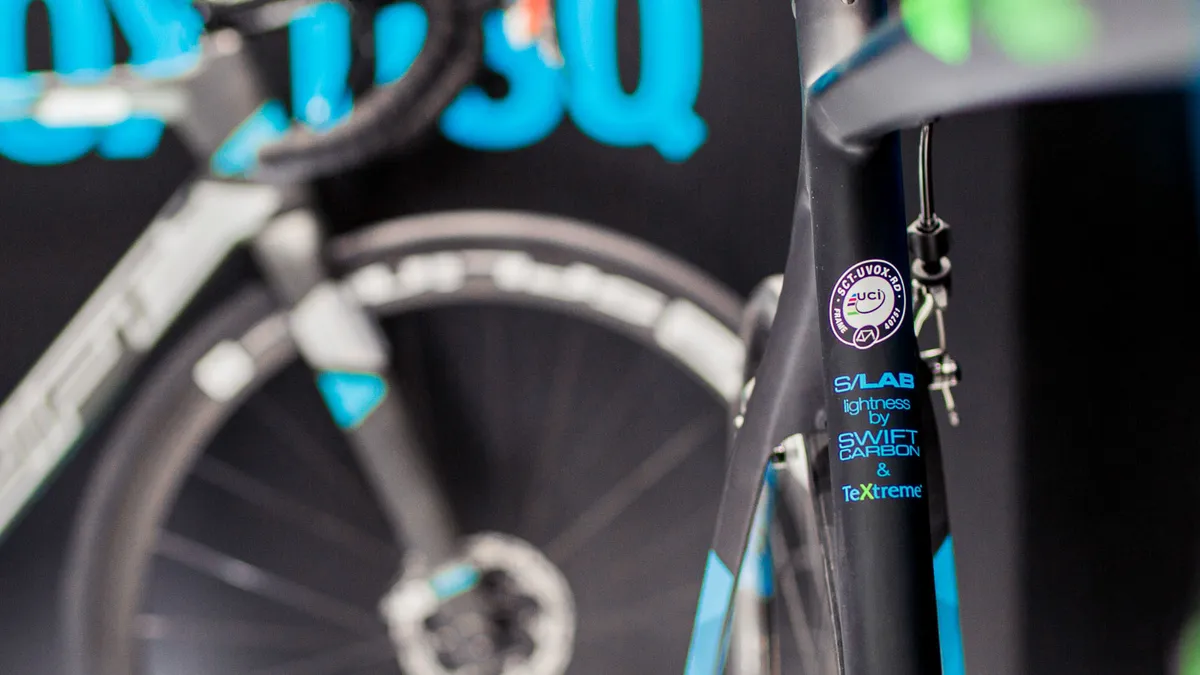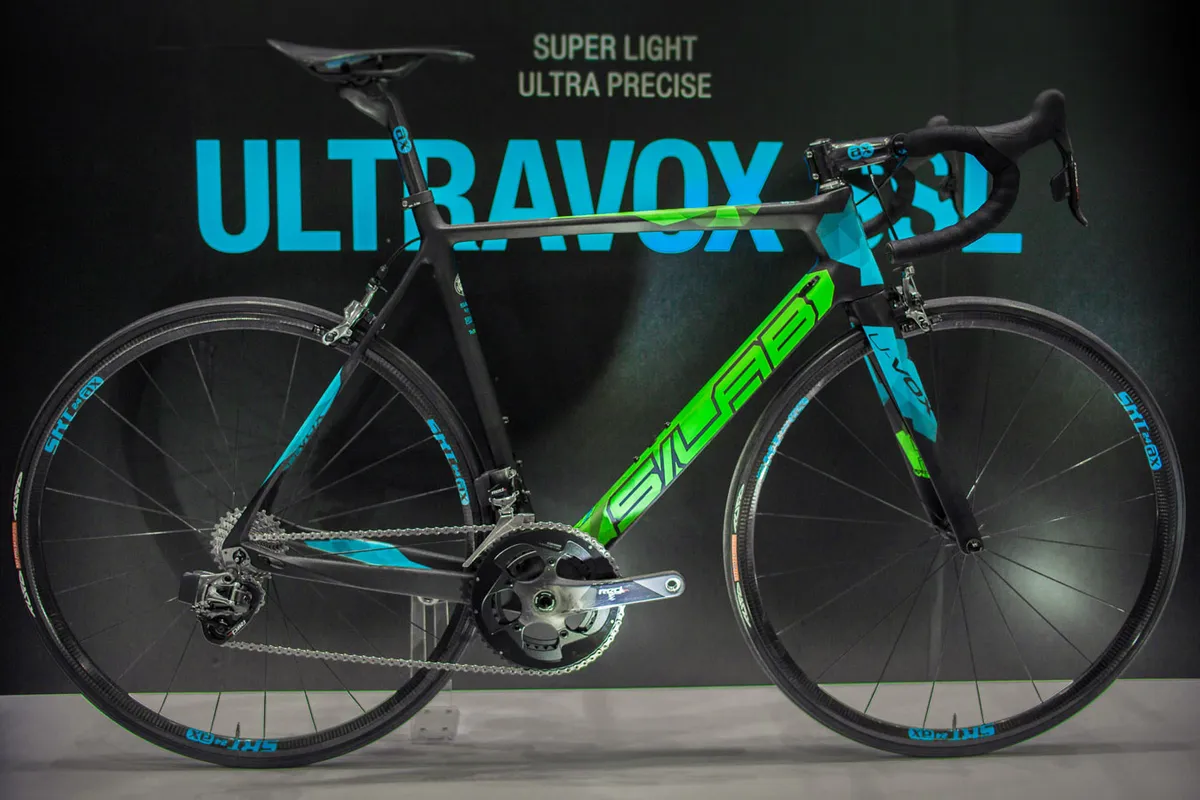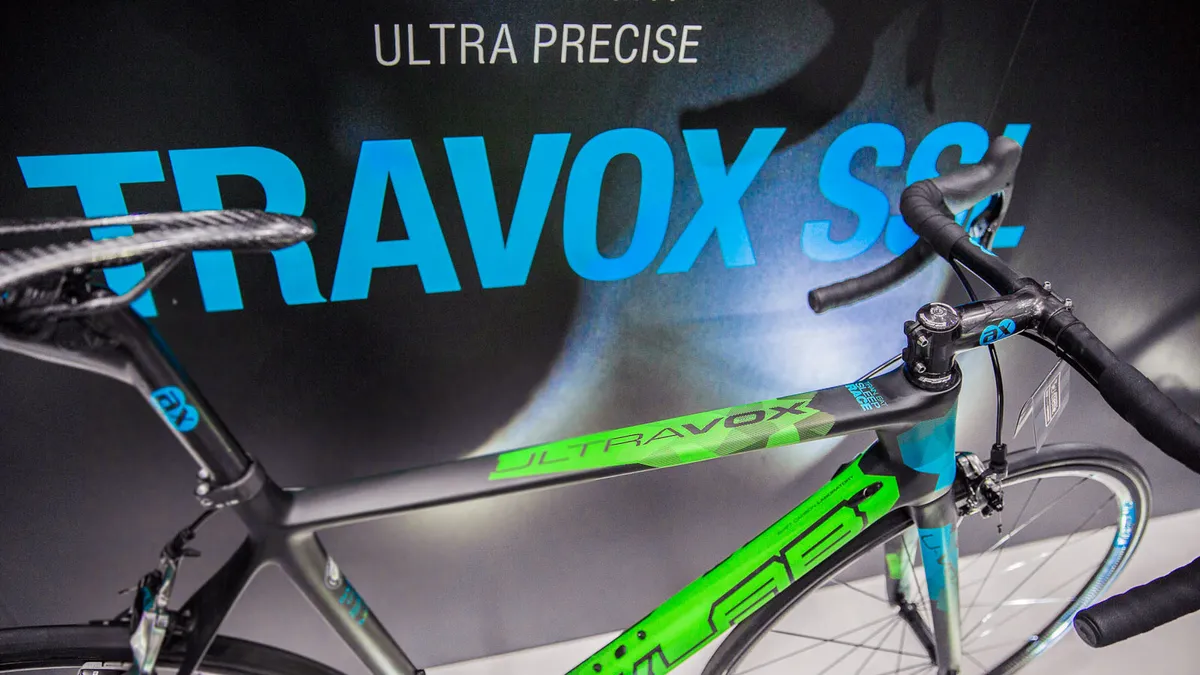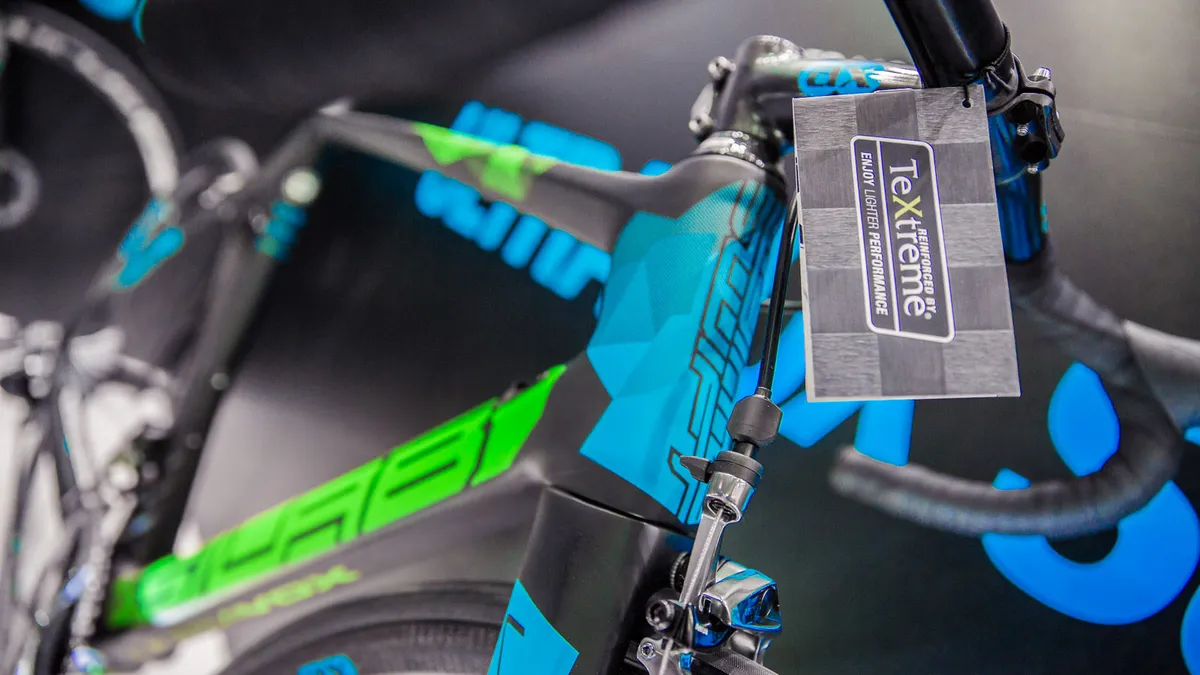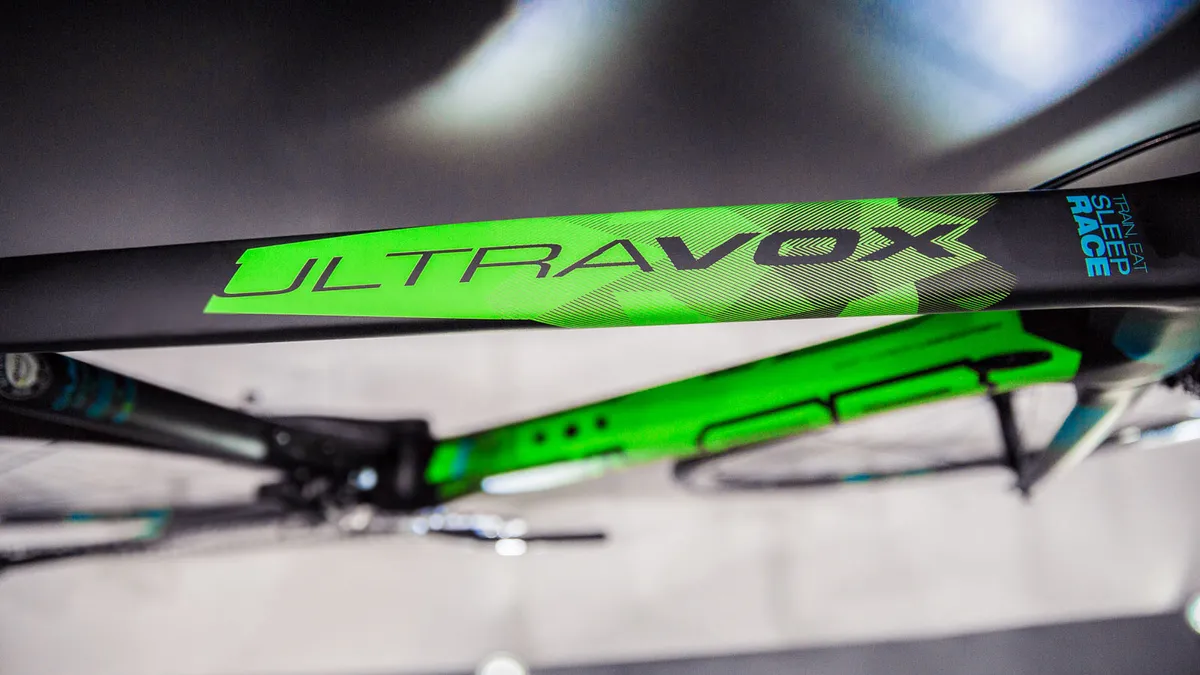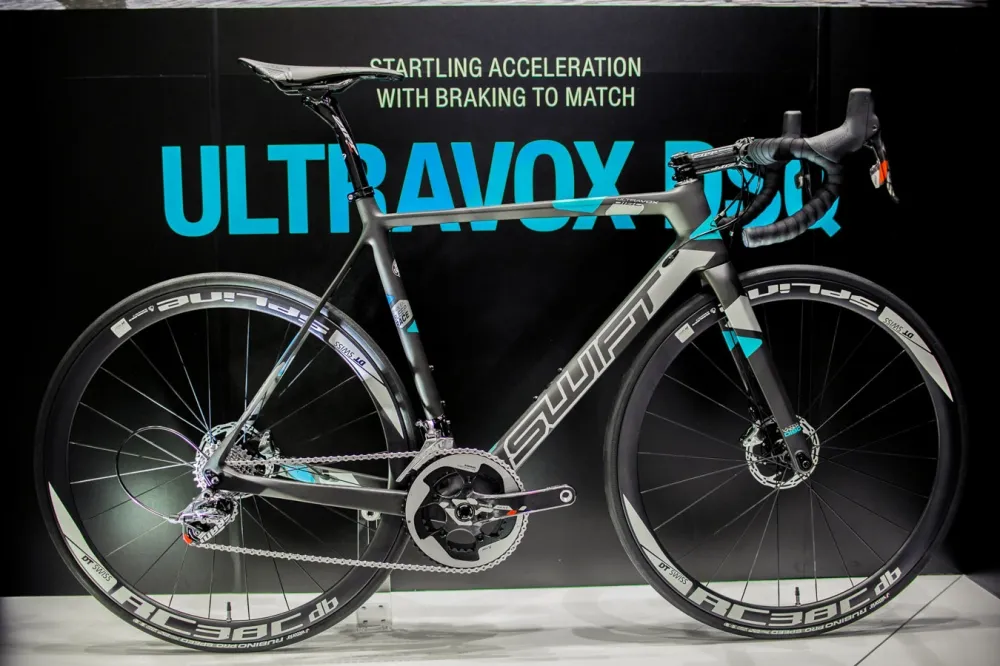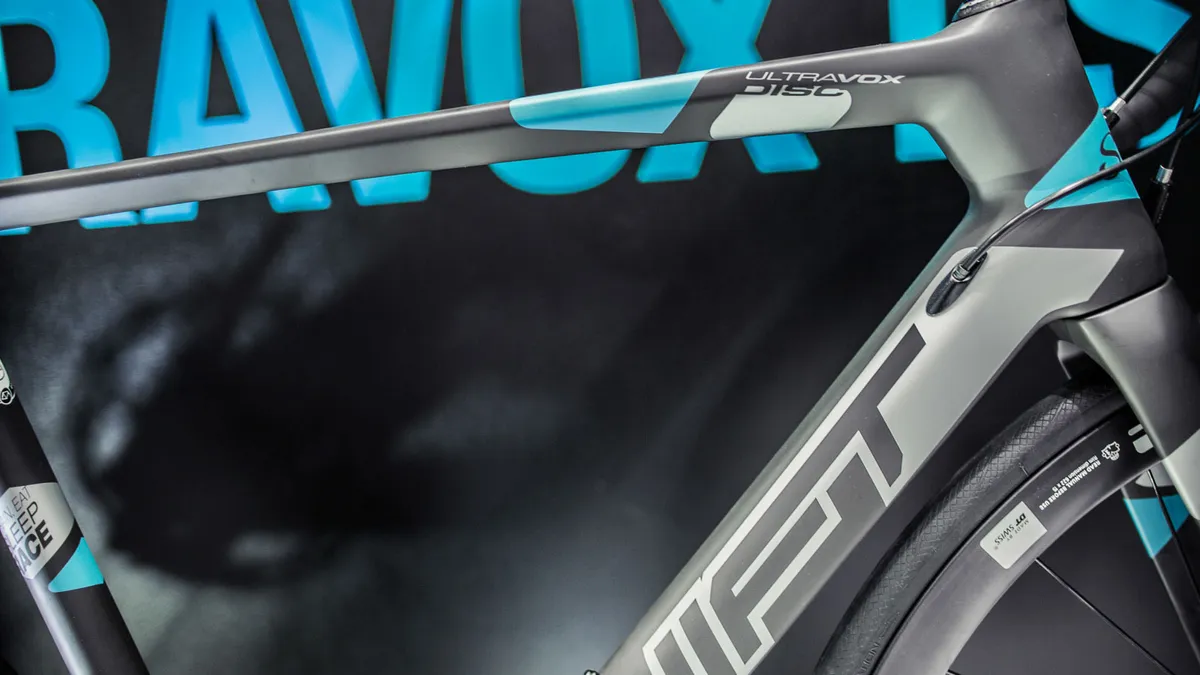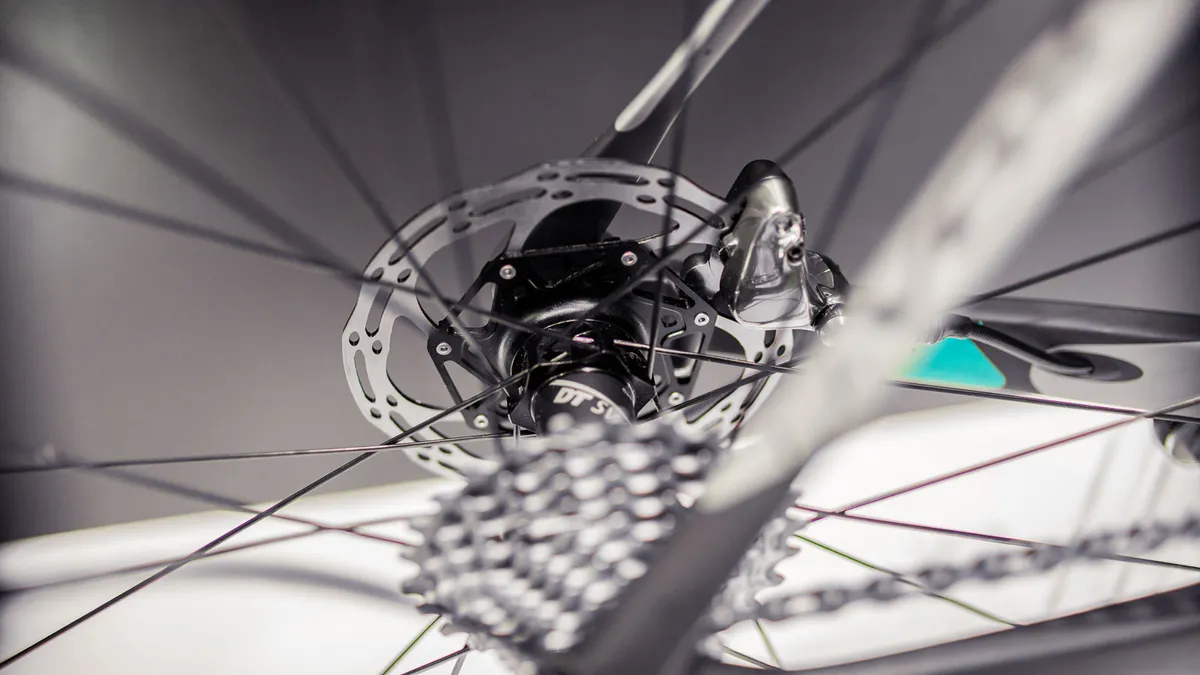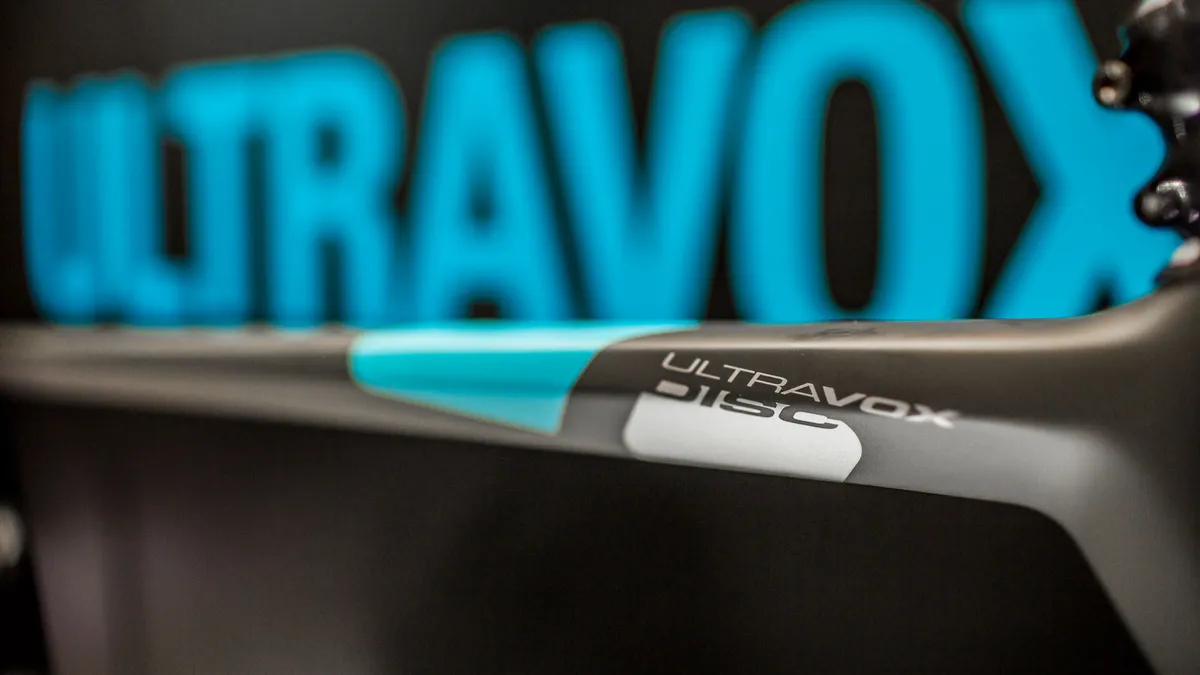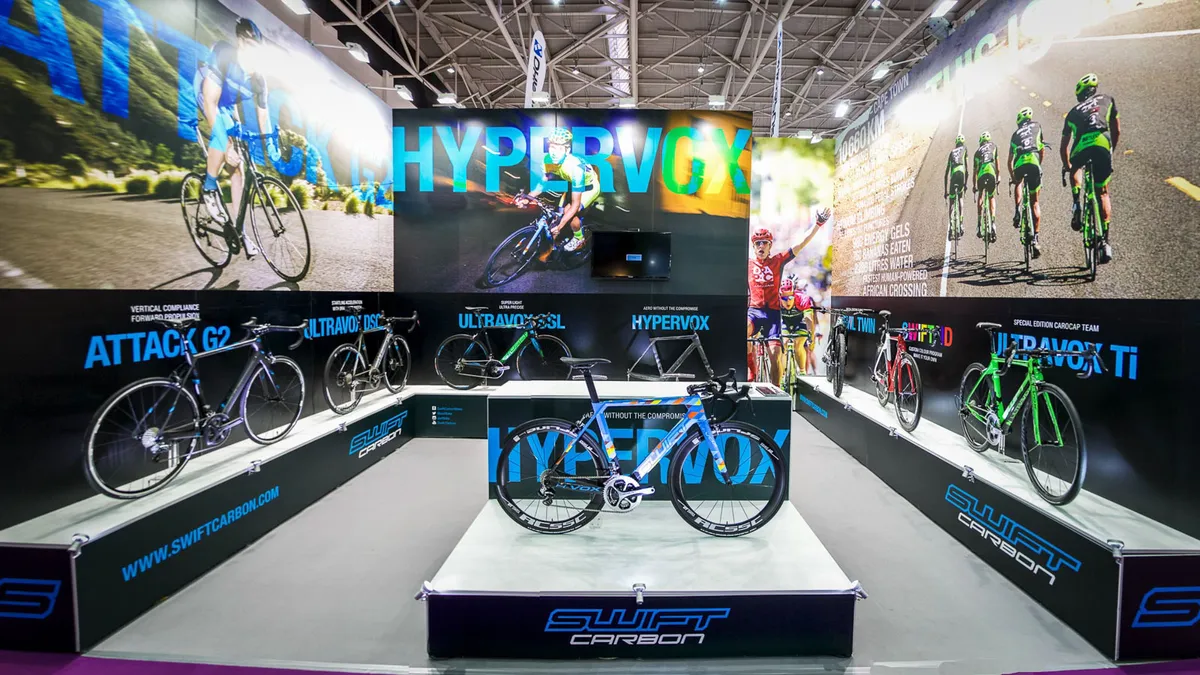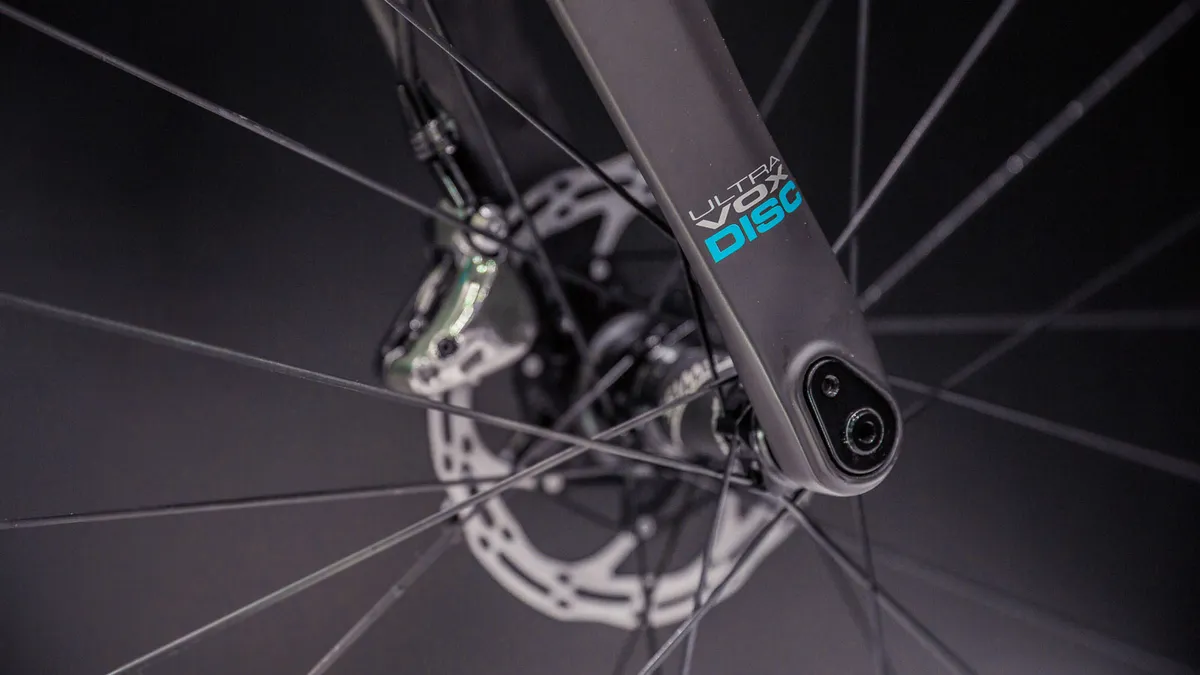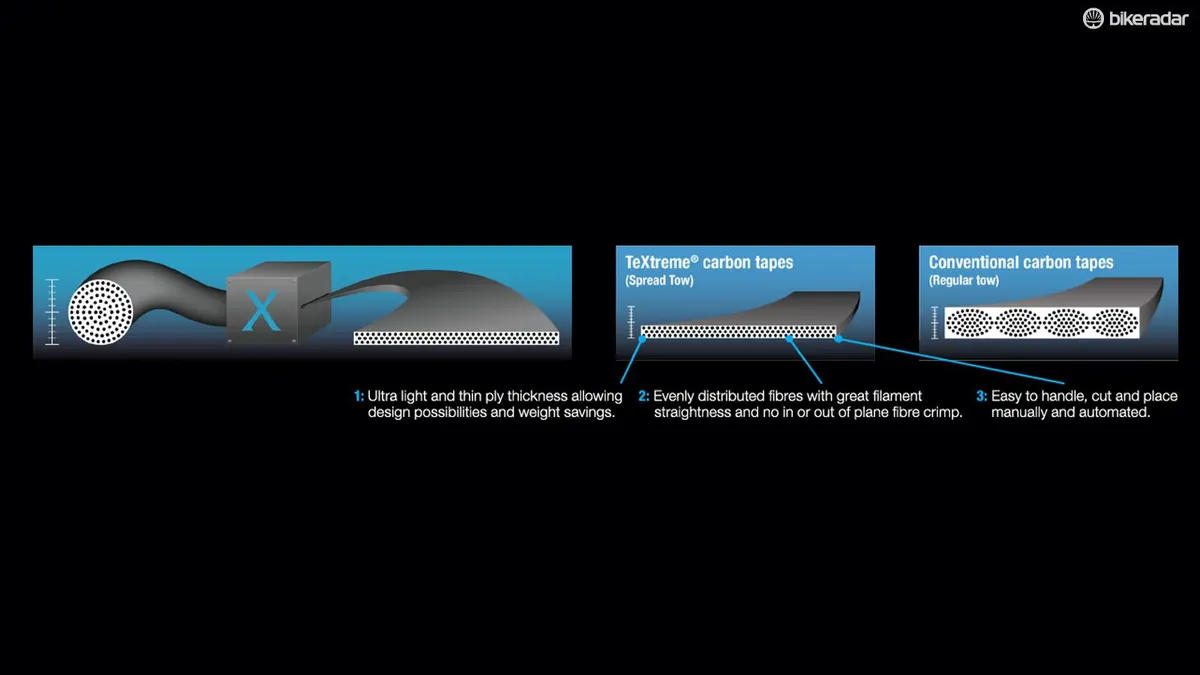Performance carbon frame company SwiftCarbon has just revealed two new 2017 road models at the Taipei Cycle Show. With the intention of sitting over the top of the current Ultravox Ti, there are two new Ultravoxs: the disc-equipped DSQ and the superlight SSL built with TeXtreme carbon.
As these are set for the next product season, details as pricing and frame weights are still to be confirmed. This release comes just weeks after the first sight of SwiftCarbon’s first aero road bike, the Hypervox.
Disc-equipped race bike: Ultravox DSQ
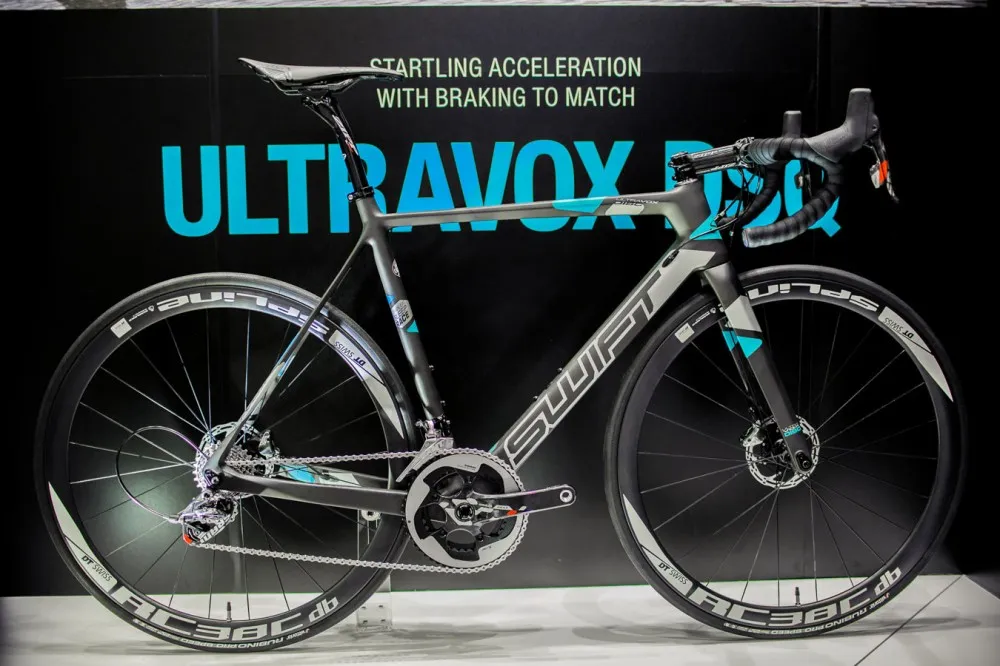
The 2017 Ultravox DSQ
Many brands are already offering disc-equipped road bikes, but few are offering race-ready options. Perhaps going against the grain, SwiftCarbon decided to use its Ultravox race platform as its first disc road bike.
Swift openly admits to being late to the party here, but have seemingly been waiting to see various standards stabilize and gain acceptance before committing. Unfortunately such standards are still in limbo, and so the brand has equipped a switchable dropout system to allow for thru-axle fitment changes. Such a system is quite common in modern mountain bikes, but rare in the more traditional road bike market.
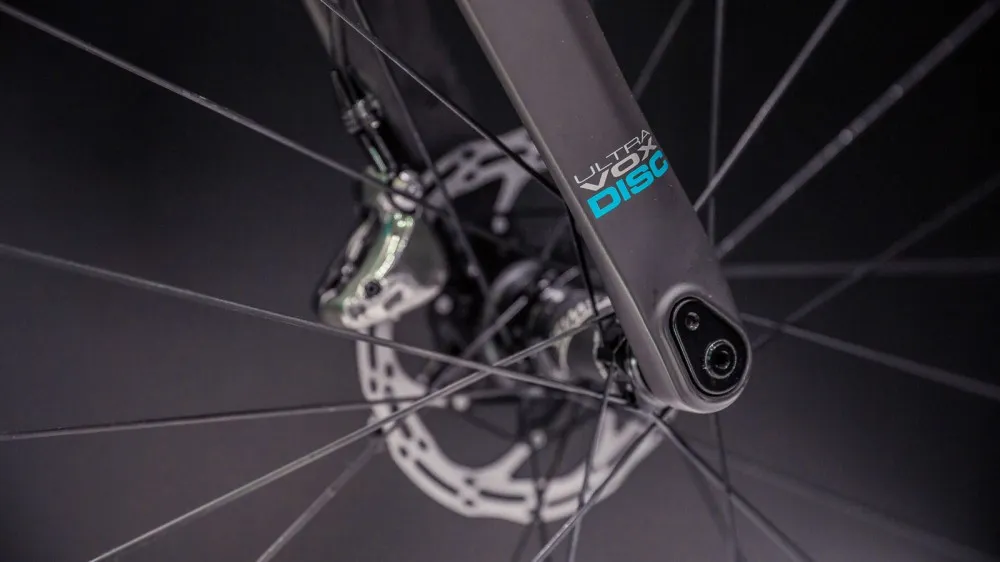
A smart approach to undecided standards
The Ultravox DSQ will be equipped with 100mm and 142mm thru-axles front and rear respectively. With a swappable end cap system, the dropouts will be interchangeable between SRAM’s Maxle and Shimano’s E-bolt type axles.
The disc brakes will mount via the new and widely accepted Shimano Flat Mount standard. Designed for road only, such a system offers a far lower profile, lighter and generally simpler method of attaching the brake calipers to the frame.
Related reading: SwiftCarbon's owner rides Ultravox Ti to fastest human powered crossing of Africa
Fitting with current trends for 'wider is better', the new DSQ is designed to fit up to 30mm endurance-orientated rubber. While this is quite different to the current professionally raced Ultravox Ti, the DSQ’s geometry will not be.
While further details are limited, we suspect much of the new frame to follow design cues from the brand’s latest offerings, including the BB386 bottom bracket shell and clean internal cable routing.
Ultravox SSL with TeXtreme
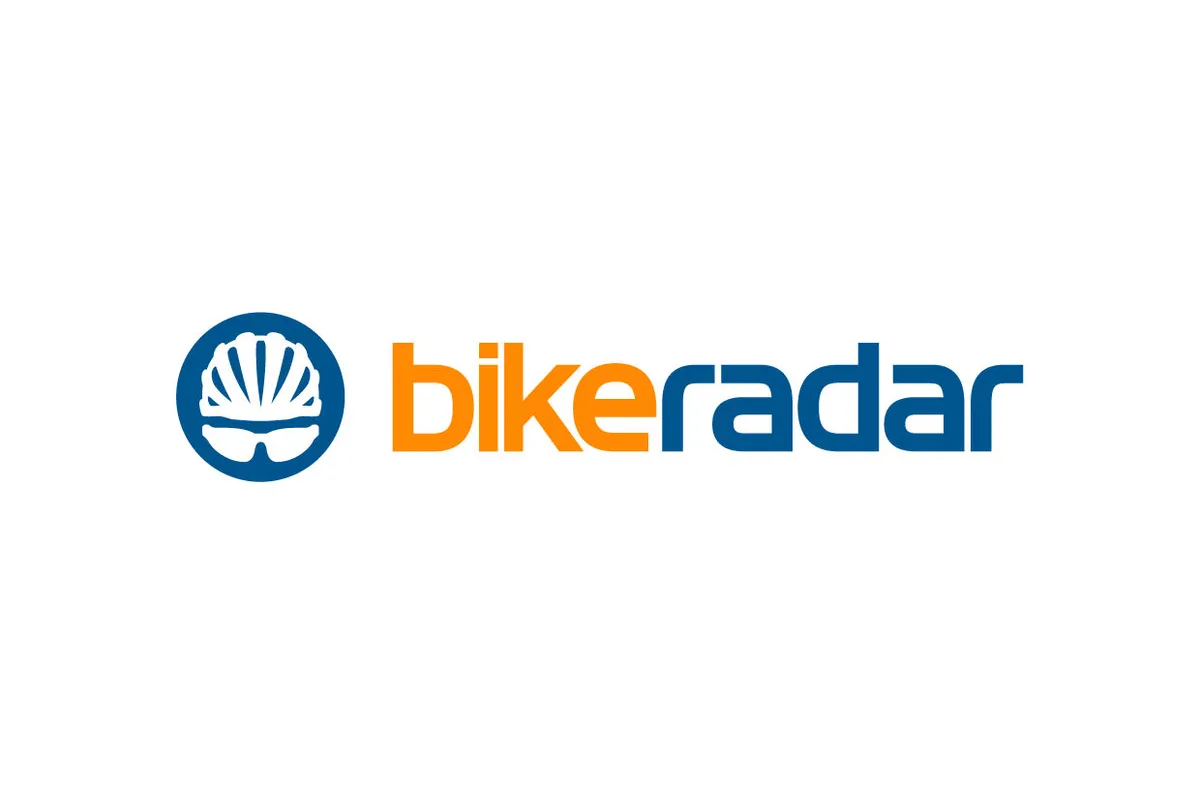
The 2017 Ultravox SSL
The new SSL comes following the brand’s previously teased SCULP frame, an AX-Lightness collaboration. While the sub-700g SCULP frameset never made it to production, Swift claims to have learned plenty in the process of creating such a lightweight frame and has applied many of these findings to the Ultravox SSL.
Details of the frame are extremely limited, but we have been told this will be Swift’s lightest and stiffest frame yet. The big story of the SSL is in its variety of carbon and chosen layup designed to push industry boundaries.
A representative from SwiftCarbon told BikeRadar: “As a small brand we just have to keep evolving things from a composite tech point of view.” And it’s this use of composites that earns the SSL name, something that Swift is likely to roll out amongst its other models in future.
Following the trial in the SCULP, SwiftCarbon once again has partnered with Swedish composites company ‘TeXtreme’ to bring a technology that up until now has only been available in cycling through Felt Bicycles' top-tier 'FRD' models.
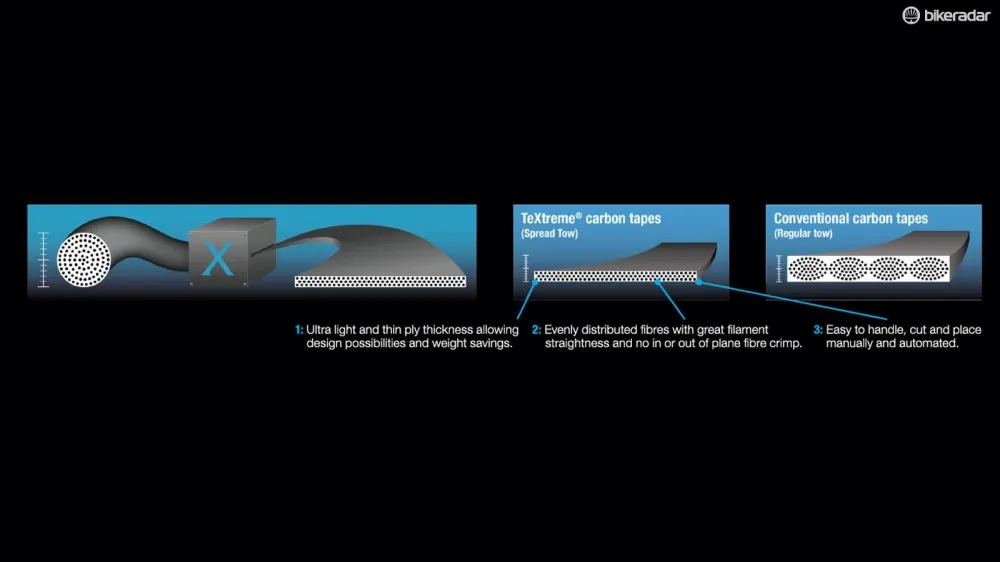
TeXtreme is a spread tow carbon with far less voids between resin
Used extensively in other industries, this composite technology aims to reduce the amount of material used to more traditional carbon tows, leading to a claimed 20% reduction in weight at the same strength and stiffness.
TeXtreme does this with an ultra thin and flat tow layout of the fibres that allows for far less resin (glue), greater material compaction and easier handling. In the case of this Ultravox, it's not all about weight savings and the material is used to reduce weight, but also to boost frame stiffness.
In addition to TeXtreme, this new Ultravox will use a mix of Toray and Mitsubishi-Rayon fibres for what the brand claims is the best balance between various modulus carbons.
Exactly how stiff or light is this frame? Unfortunately it’s information for which we’ll have to wait.
